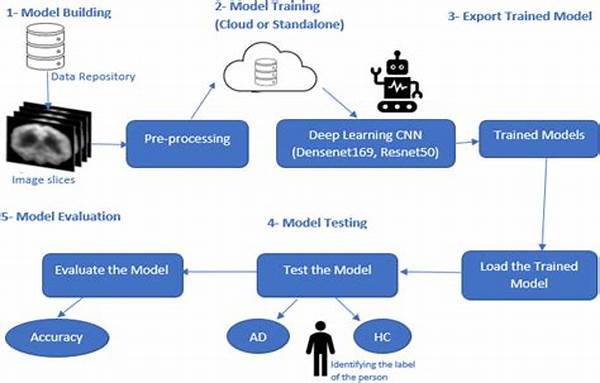Deep Learning Security Protocols: A New Era in Cybersecurity
In today’s rapidly evolving digital landscape, cybersecurity stands as a critical front in the battle against cyber threats. With cybercriminals becoming increasingly sophisticated, traditional security measures are no longer sufficient to protect sensitive data. This is where deep learning security protocols come into play, offering a revolutionary approach to safeguarding digital assets. Imagine a world where cybersecurity is so advanced that it can predict and neutralize threats in real-time, ensuring the safety of your data and peace of mind. This is not just an idealistic vision for the future but a reality being crafted today through the innovative use of deep learning in security.
As we dive into the fascinating realm of deep learning security protocols, it’s essential to grasp their significance. Unlike conventional security systems that rely heavily on predefined rules and signatures, deep learning security protocols employ advanced algorithms and artificial intelligence to learn from vast datasets. They identify unusual patterns and anomalies, making these protocols especially effective in detecting and thwarting zero-day attacks and advanced persistent threats. Enabling machines to think, adapt, and respond swiftly transforms cybersecurity, fragmenting cybercrime’s traditional advantage.
Now, why should you care about these cutting-edge security solutions? Well, whether you’re a tech enthusiast, business owner, or cybersecurity professional, the implementation of deep learning security protocols promises to offer unparalleled protection and a competitive edge. Imagine your business running smoothly without the constant fear of data breaches. Plus, as these protocols evolve, they will become increasingly accessible and cost-effective, making it an exciting time to delve into the world of deep learning security.
Transcending Traditional Security Measures
The integration of deep learning security protocols represents a fundamental shift in how we approach cybersecurity. Unlike their traditional counterparts, these protocols leverage neural networks—complex computing systems inspired by the human brain. They analyze patterns from historical data, learn from them, and adapt to new malware strains. In essence, they provide a self-improving security mechanism.
As reported in recent studies, organizations adopting deep learning security protocols have observed a substantial reduction in false positives, ensuring that genuine threats are not overlooked. This efficiency is crucial because it saves valuable time and resources, allowing cybersecurity teams to focus on actual vulnerabilities rather than chasing shadows. Moreover, with the continuous refinement of these protocols, the scope of possible applications is expanding, making them a formidable force against cyber adversaries.
Real-World Applications of Deep Learning Security Protocols
Deep learning security protocols are already reshaping various industries by offering robust solutions to complex security challenges. In the financial sector, for instance, banks employ these protocols to detect fraudulent transactions, safeguarding customers’ assets and enhancing trust in digital banking. Meanwhile, healthcare providers implement them to protect sensitive patient information from cyber threats, ensuring compliance with stringent data protection regulations.
By reducing human intervention and utilizing automation, deep learning security protocols streamline operations while significantly bolstering security. As these technologies continue to mature, they hold the potential to redefine cybersecurity across all industries, offering robust protection against ever-evolving threats.
Harnessing the Future: Opportunities and Challenges
As promising as deep learning security protocols are, they also present certain challenges. The need for vast datasets to train algorithms can raise privacy concerns, as data must be meticulously curated to prevent bias and ensure fairness. Additionally, while these protocols are powerful, the complexity involved in developing and maintaining them requires specialized knowledge and expertise.
However, the opportunities far outweigh the challenges, and ongoing research promises to address these issues. The future of cybersecurity lies in continuously refining these protocols, striking a balance between security and privacy, and harnessing the power of AI to create secure digital environments.
Key Features of Deep Learning Security Protocols
Challenges and Opportunities in Implementation
The implementation of deep learning security protocols presents various challenges and opportunities. For starters, the large datasets required for training can raise privacy issues, making it essential to handle data responsibly. Additionally, the complexity of these protocols necessitates expertise, underscoring the importance of ongoing education and training in the field.
Despite these challenges, the benefits are extraordinary. The ability to detect new, unseen threats and react instantly is transforming cybersecurity. Organizations that adopt these protocols gain a critical edge, securing their data in a world where threats are continually evolving.
The Impact of Deep Learning on Cybersecurity Strategies
Exploring the Future
The potential of deep learning to revolutionize cybersecurity is undeniable. These protocols are not only enhancing existing security measures but are also setting new standards for resilience and adaptability in the face of cyber threats. Through collaboration between tech firms, academic institutions, and industries, the future of cybersecurity is bright.
The journey of deep learning security protocols is an evolving narrative, one that invites innovators, businesses, and individuals to partake in shaping a secure digital future. As we forge ahead, the promise of unparalleled security and peace of mind stands as the ultimate goal, driving progress and adaptation in this exciting field.

